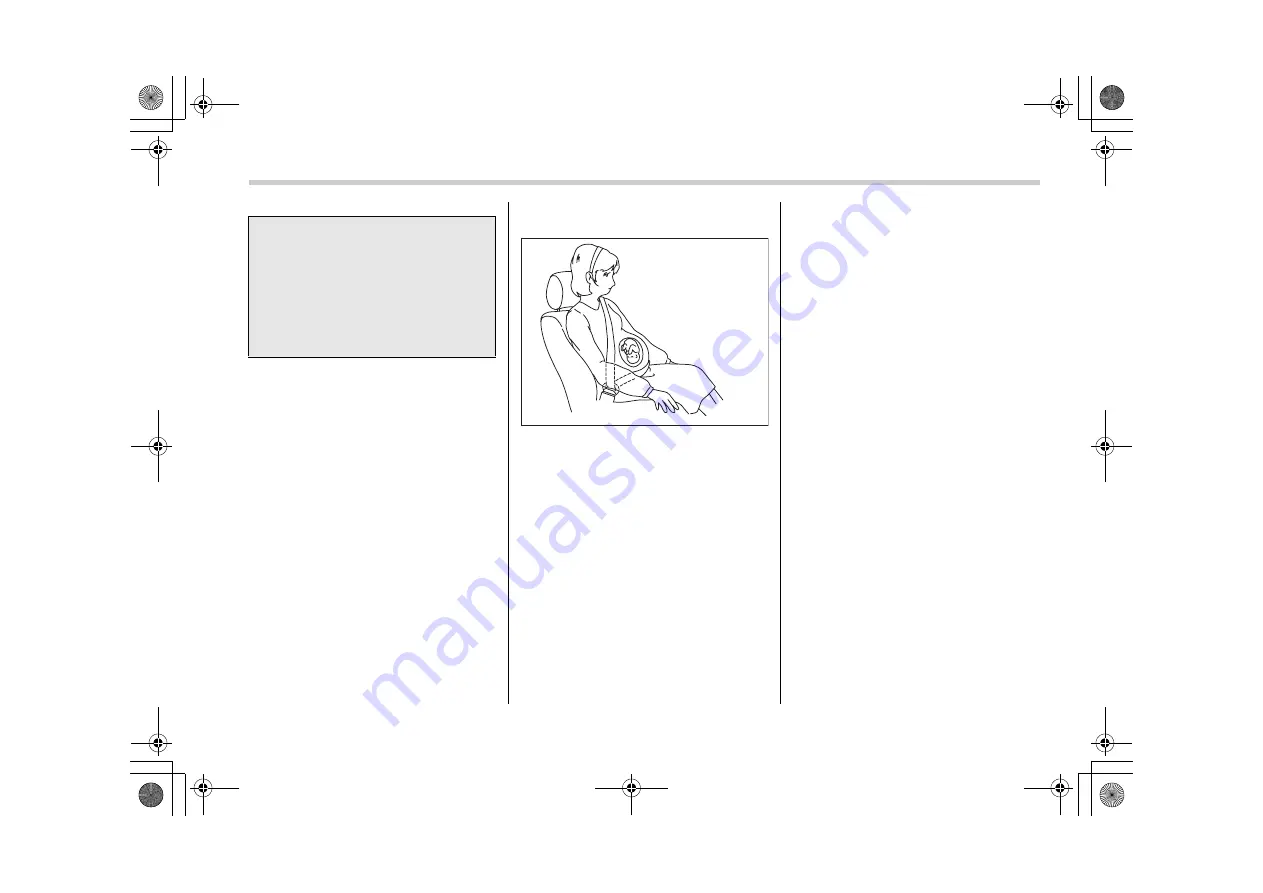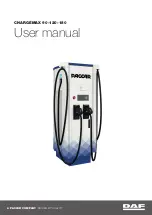
29
–
CONTINUED
–
If a child is too big for a child restraint sys-
tem, the child should sit in the rear seat
and be restrained using the seatbelts. Ac-
cording to accident statistics, children are
safer when properly restrained in the rear
seating positions than in the front seating
positions. Never allow a child to stand up
or kneel on the seat.
Seatbelts are designed under the as-
sumption that adult-sized occupants will
use them. If the shoulder portion of the
belt crosses the face or neck, move the
child closer to the belt buckle to help pro-
vide a good shoulder belt fit. Care must be
taken to securely place the lap belt as low
as possible on the hips and not on the
child’s waist. If the shoulder portion of the
belt cannot be properly positioned, a child
restraint system should be used. Never
place the shoulder belt under the child’s
arm or behind the child’s back.
T
Expectant mothers
Expectant mothers also need to use the
seatbelts. They should consult their doctor
for specific recommendations. The lap
belt should be worn securely and as low
as possible over the hips, not over the
waist.
Emergency Locking Retrac-
tor (ELR)
The driver’s seatbelt and front passen-
ger’s seatbelt have an Emergency Lock-
ing Retractor (ELR). The emergency
locking retractor allows normal body
movement but the retractor locks auto-
matically during a sudden stop, impact or
if you pull the belt very quickly out of the
retractor.
Automatic Locking Retractor/
Emergency Locking Retrac-
tor (ALR/ELR)
Each rear passenger’s seatbelt has an
Automatic Locking Retractor/Emergency
Locking Retractor (ALR/ELR). The Auto-
matic Locking Retractor/Emergency Lock-
ing Retractor normally functions as an
Emergency Locking Retractor (ELR). The
ALR/ELR has an additional locking mode,
“Automatic Locking Retractor (ALR)
mode”, intended to secure a child restraint
system.
First check if the ALR mode is equipped
for the seatbelts of the vehicle. If the ALR
mode is equipped, the seatbelts function
as follows.
When a seatbelt is once drawn out com-
pletely and is then retracted even slightly,
According to accident statistics,
children are safer when properly re-
strained in the rear seating posi-
tions than in the front seating
positions. For instructions and pre-
cautions concerning the child re-
straint system, refer to the “Child
restraint systems” section in this
manual.
S00234
B1301AE-A.fm 29 ページ 2016年8月29日 月曜日 午前10時4分
















































